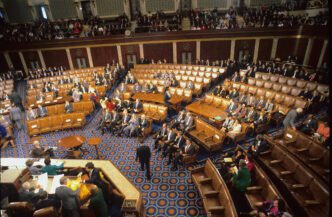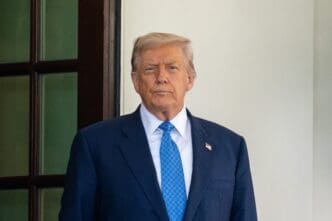Executive Summary
- President Donald Trump has shifted his position on the Ukraine conflict, now advocating for a comprehensive peace deal instead of a ceasefire.
- This change follows high-level diplomatic engagements, including a summit with Russian President Vladimir Putin and subsequent conversations with Ukrainian President Volodymyr Zelensky and European leaders.
- President Zelensky is scheduled to meet President Trump in Washington, D.C., on Monday, with discussions potentially involving security guarantees for Ukraine as part of a peace deal.
The Story So Far
- President Trump’s shift from advocating a ceasefire to a comprehensive peace deal follows a series of high-level diplomatic engagements.
- These engagements include a summit with Russian President Vladimir Putin and subsequent conversations with Ukrainian President Volodymyr Zelensky and European leaders.
Why This Matters
- The shift from advocating a ceasefire to a comprehensive peace deal signals a more ambitious and potentially enduring diplomatic strategy from President Trump regarding the conflict.
- The inclusion of discussions about security guarantees for Ukraine suggests that any potential peace agreement could involve international commitments to ensure the country’s long-term stability.
- The upcoming meeting between President Trump and President Zelensky in Washington, D.C., indicates a direct and high-level engagement critical to advancing these renewed peace efforts.
Who Thinks What?
- President Donald Trump has altered his position, now advocating for a comprehensive peace deal for the conflict in Ukraine, a shift from his previous stance on a ceasefire, following recent diplomatic engagements.
- Ukrainian President Volodymyr Zelensky is engaging in high-level discussions with President Trump, including a scheduled meeting, indicating his participation in the ongoing diplomatic efforts towards a resolution.
- European officials are discussing the provision of security guarantees for Ukraine, should a peace deal be reached, highlighting their focus on the terms and assurances within a potential agreement.
President Donald Trump has altered his position on ending the conflict in Ukraine, now advocating for a comprehensive peace deal instead of a ceasefire. This shift follows a series of high-level discussions, including a summit with Russian President Vladimir Putin in Alaska, and subsequent conversations with Ukrainian President Volodymyr Zelensky and European leaders.
Diplomatic Engagements
The pivot towards a peace agreement emerged after President Trump’s recent diplomatic activities. These engagements included his summit with President Putin in Alaska, which was followed by a “long and substantive conversation” with President Zelensky.
President Zelensky is scheduled to meet with President Trump in Washington, D.C., on Monday. Discussions with European officials reportedly involved the provision of security guarantees for Ukraine, should a peace deal be reached.
Summit Outcomes
Prior to these developments, President Trump had indicated that he and President Putin had made “great progress” during their summit. However, he also noted at the time that no specific deal regarding the Ukraine war had materialized from their discussions.
The shift in President Trump’s approach signals a renewed focus on a comprehensive resolution for the conflict, emphasizing a peace deal potentially accompanied by security assurances, as high-level diplomatic engagements continue.








